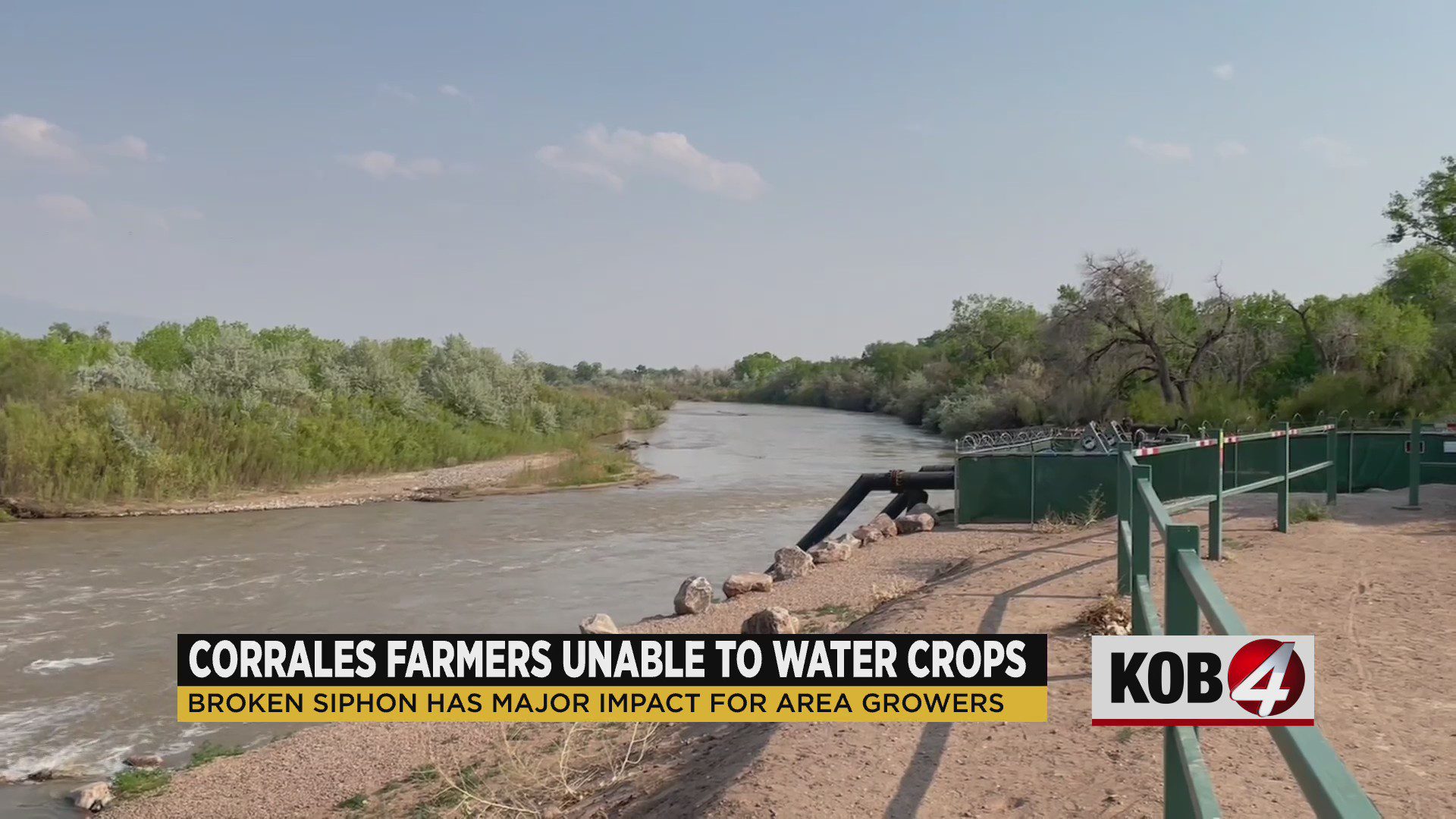Broken siphon causes water issues for Corrales farmers
[anvplayer video=”5109666″ station=”998122″]
CORRALES, N.M. – Aging infrastructure paired with drought conditions is spelling trouble for farmers in Corrales this season.
Some say they’re on the verge of losing farms and orchards that have been in their families for decades, including Wagner Farms, which occupies more than 30 acres in Corrales.
“They’re just drying up, we’ve lost our crops, the apples,” said co-owner Jimmy Wagner. “That’s our livelihood, we feed thousands of people and we try to keep it at a good price.”
Usually, they would’ve watered their crops up to four times by now. But this year, they’ve only had enough water for one time.
“We might lose this orchard and my dad planted it sixty years ago,” said Anthony Wagner, Jimmy’s brother and co-owner.

And they’re not the only ones in this position. Other area farmers are making their voices heard about the lack of water.
“I don’t know if I’ll be able to grow fruit again or not,” said Rudy Perea, the owner of Corrales Orchards. “When you lose the trees it takes ten years for them to produce. It’s not like planting chile or corn.”
“I’ve been growing chile all my life, and this is the worst year I’ve ever ever had,” said Tony Tafoya, another area farmer. “I don’t know if I’m going to have a crop at all this year.”
They already know what’s causing all of this hardship.
It’s a broken siphon north of Corrales, under the Rio Grande. The Middle Rio Grande Conservancy District oversees that part of the river, and leaders say they are looking for a permanent fix for the siphon.
In the meantime, its board approved one million dollars in funding in order to provide water for irrigation this season. It put a pumping system in place.
“When we discovered the size of the hole and the extent and the ability of fixing the siphon was just not possible with the timeframe needed before irrigation season was going to start,” said Jason Casuga, CEO and chief engineer for the Middle Rio Grande Conservancy District. “Just based on my experience and knowing how wide the river is, if we’re going to try to either put a new pipe in there or line, I expect that it’s going to be quite expensive.”
Two diesel-powered pumps draw water directly from the river, into the Corrales main canal. They run around the clock, four days a week.
“I am aware and our board is aware of orchards that are in Corrales and we’re doing everything we can with the resources we have and the people we have to move water there for as long as we can,” said Casuga.
He says the pumps need monitoring while they run, and days off for regular maintenance.
“It’s definitely not for a lack of caring, a lack of understanding,” said Casuga. “It’s just, unfortunately, the realities of where we find ourselves from a resource standpoint in terms of people, and where we sit related to this drought, and obviously the state of the Corrales siphon infrastructure.”
So until there’s a long-term solution for the siphon, the water supply farmers have now, is what they’ll get.
“We have a tough summer and we probably have several tough summers coming our way and this is what it looks like to be runner of the river,” said Casuga. “We are at the mercy of what mother nature gives us so if you are a praying type, pray for rain.”
The MRGCD hopes to have a long-term solution by the winter months, in order to propose to the state for funding. Leaders believe the siphon fix will cost much more than the current pumping operation.